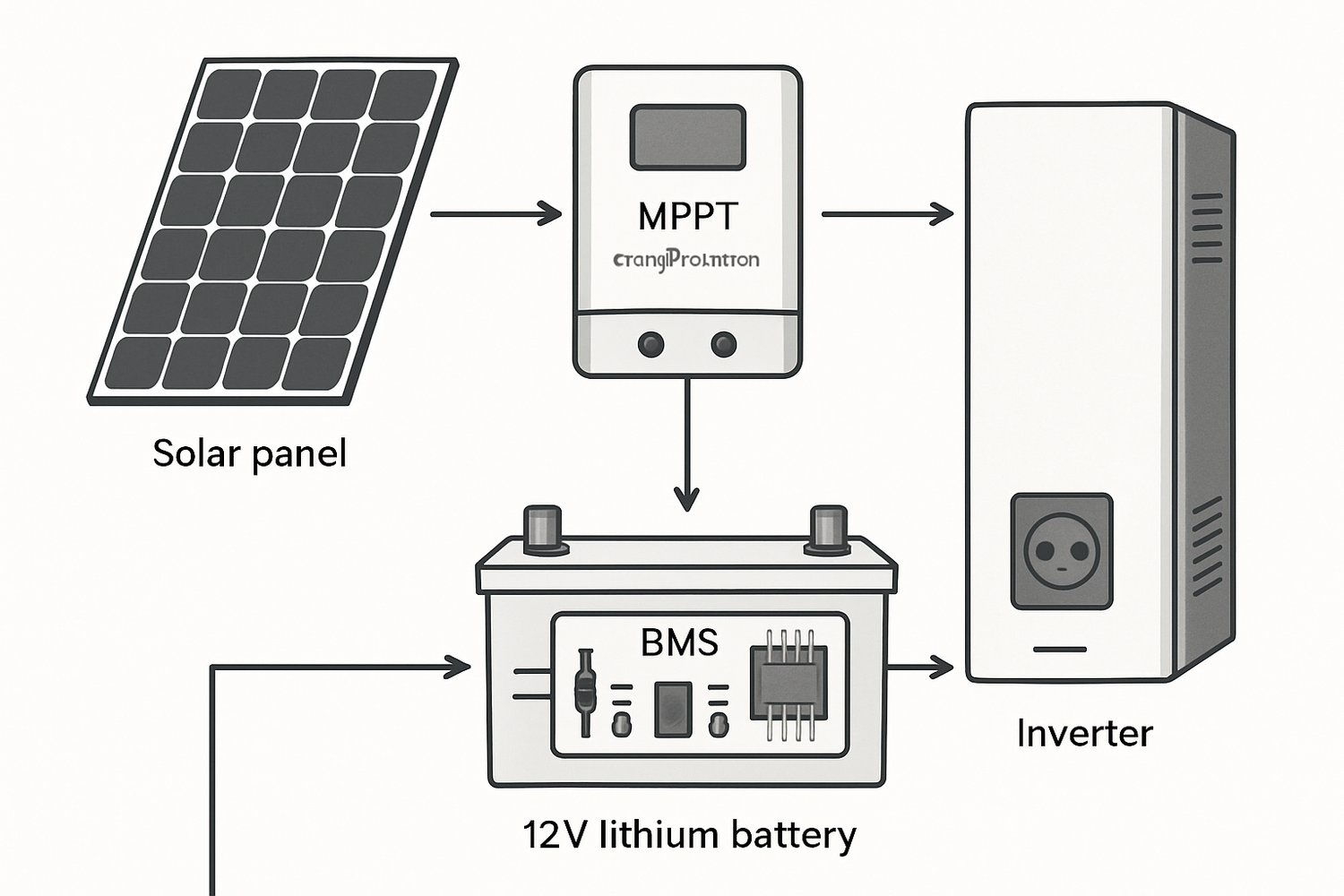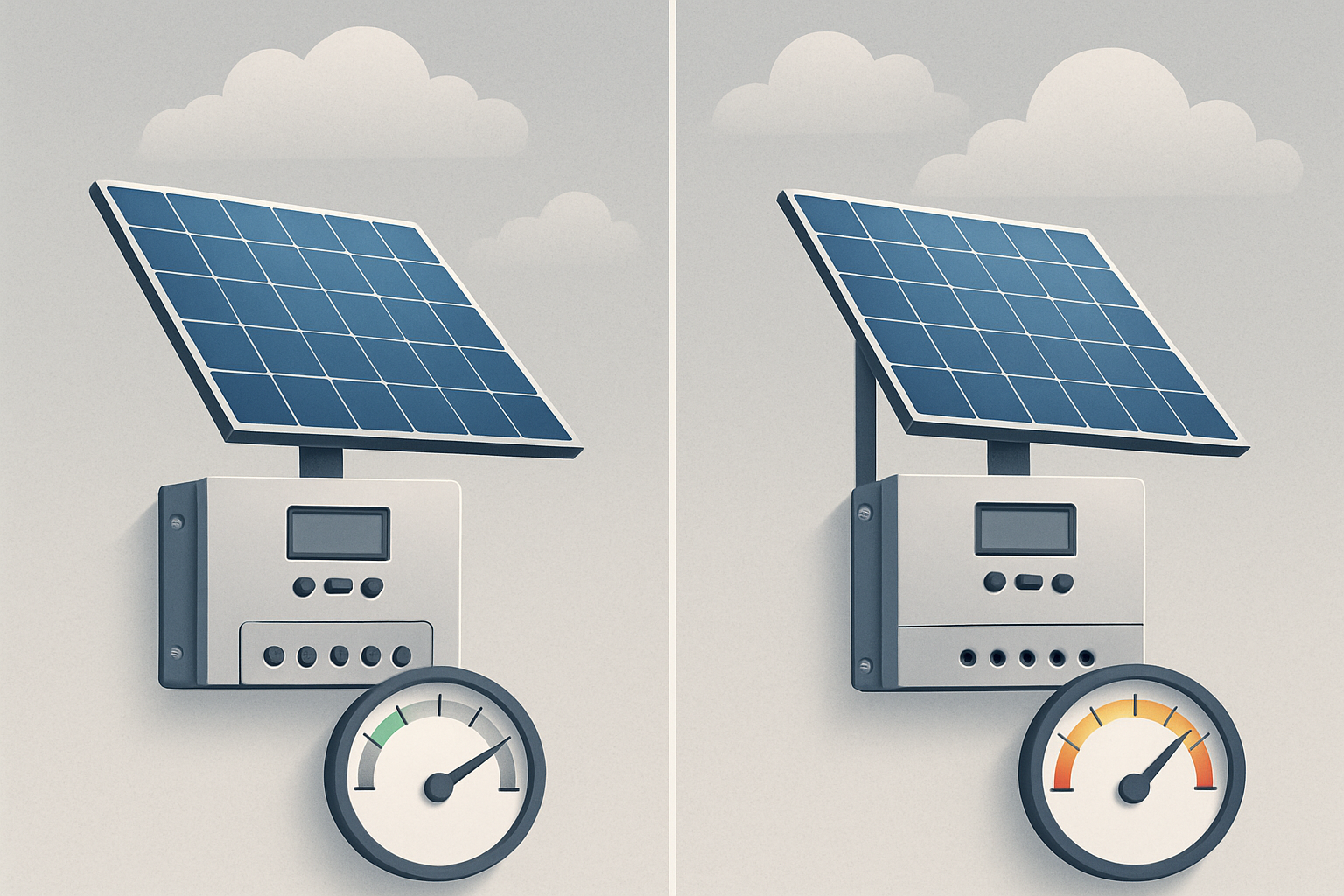Optimizing the solar charging process for your 12V lithium battery is fundamental to achieving energy independence. A properly configured system ensures you capture every possible watt from the sun, extending battery life and guaranteeing reliable power. The key lies in understanding how components work together, especially the solar charge controller, which acts as the heart of your solar setup.
Choosing the Right Solar Charge Controller
The charge controller regulates the power flowing from your solar panels to your lithium iron phosphate battery. It prevents overcharging and optimizes the charging process. The two main types of controllers, PWM and MPPT, offer different levels of performance and efficiency for 12V lithium battery solar charging.
Understanding PWM Controllers
Pulse Width Modulation (PWM) controllers are the simpler of the two technologies. They function like an intelligent switch, rapidly connecting and disconnecting the solar panel from the battery. When the battery is charging, the switch is mostly on. As the battery approaches full capacity, the controller 'pulses' the current, tapering it off to prevent overcharging. While effective and inexpensive, this method can lead to efficiency losses, as the solar panel's voltage is pulled down to match the battery's voltage.
The Power of MPPT Technology
Maximum Power Point Tracking (MPPT) controllers are more advanced. They can accept a higher voltage from solar panels and convert it down to the battery's voltage. This process allows the solar panels to operate at their optimal voltage and current, or 'maximum power point,' where they produce the most power. An MPPT charge controller constantly tracks this point, which fluctuates with changing light conditions and temperature, ensuring maximum power harvest throughout the day. This technology is particularly effective in cooler climates or during periods of partial shading.
MPPT vs. PWM: A Data-Driven Comparison
For most applications involving a 12v 100ah lifepo4 lithium battery, an MPPT controller provides a significant advantage. The efficiency gains can be as high as 30% compared to PWM controllers, especially when the solar panel's voltage is substantially higher than the battery's. This means faster and more complete charging cycles.
| Feature | PWM Controller | MPPT Controller |
|---|---|---|
| Efficiency | 75-80% | 95-99% |
| Cost | Low | High |
| Best Use Case | Small, cost-sensitive systems | Systems of all sizes, especially where efficiency is critical |
| Weather Performance | Less effective in cold or cloudy conditions | Excellent performance in variable conditions |
| Panel Compatibility | Panel voltage must match battery voltage | Allows higher voltage panels for greater flexibility |
The Critical Role of the Battery Management System (BMS)
A high-quality lithium battery pack includes an integrated Battery Management System (BMS). This electronic system is the brain of the battery, ensuring its safety, longevity, and reliable performance.
What the BMS Does
The BMS is a crucial component for any deep cycle lithium battery. It continuously monitors the state of the battery and its individual cells. Its primary responsibilities include:
- Overcharge Protection: It stops the charging current when the battery is full.
- Over-Discharge Protection: It disconnects the load to prevent the battery from being drained too far.
- Cell Balancing: It ensures all cells within the battery pack are at an equal state of charge, maximizing usable capacity.
- Temperature Monitoring: It protects the battery from operating in extreme hot or cold conditions.
How the BMS Impacts Solar Charging
During solar charging, the BMS works in tandem with the charge controller. It provides the final, essential layer of protection against overcharging, which could otherwise damage the battery and create a safety hazard. By actively balancing the cells, the BMS ensures that the battery can be charged to its full potential without stressing individual cells. This meticulous management is vital for getting thousands of cycles from a 12 volt 100ah lithium battery.
System-Wide Optimization for Peak Performance
Maximizing your solar charging efficiency goes beyond just the controller and BMS. The entire system, from the panels to the wires, must be designed to work in harmony.
Correctly Sizing Your Solar Array
Your solar array must be large enough to meet your daily energy needs and fully charge your battery bank. For a 100ah lithium ion battery, a common setup might include 200 to 400 watts of solar panels. The exact size depends on your geographic location and average daily sun hours. An undersized array will struggle to keep the battery charged, especially on shorter winter days.
Minimizing Power Loss in Wiring
Power is lost as it travels through wires, a phenomenon known as voltage drop. Using wires that are too thin for the current and distance is a common mistake that can significantly reduce charging efficiency. Always use the appropriate wire gauge (thickness) for your system's amperage and the length of the wire run. Additionally, ensure all connections are tight and secure to minimize resistance.
Integrating Storage for Energy Resilience
Adding a battery storage system transforms a simple solar setup into a robust energy solution. It allows you to store the solar energy generated during the day for use at night or during power outages. As noted in the Ultimate Reference for Solar Storage Performance, understanding metrics like C-rate and depth of discharge is vital for designing a system that meets your specific needs. According to a report by the IEA, adding storage increases the overall value of a solar project. The Projected Costs of Generating Electricity 2020 study highlights that storage allows energy to be used when it is most valuable, enhancing grid stability and user benefit. This principle applies directly to off-grid solar solutions, where stored energy is essential for 24/7 power.
Achieving True Energy Independence
Maximizing the solar charging of your 12V lithium battery is a result of smart component selection and careful system design. By choosing a high-efficiency MPPT charge controller, relying on a battery with an integrated BMS, and optimizing your array and wiring, you create a powerful and resilient energy system. This thoughtful approach ensures you get the most from your investment, providing reliable and sustainable power for years to come.
Frequently Asked Questions
Can I use a PWM controller for a 12V lithium battery?
You can, but it is not recommended. A PWM controller is less efficient and may not fully charge a LiFePO4 battery because it lacks the sophisticated multi-stage charging algorithms that an MPPT controller uses. For battery health and charging efficiency, an MPPT charge controller is the superior choice.
How much more power can I expect from an MPPT controller?
An MPPT charge controller can harvest up to 30% more power from your solar panels compared to a PWM model. This advantage is most pronounced in cold weather, on cloudy days, and when the battery's state of charge is low.
Does the BMS stop charging when the battery is full?
Yes. One of the most critical functions of a Battery Management System (BMS) is to prevent overcharging. It will automatically cut off the charging current once the battery cells reach their maximum safe voltage, protecting the lithium ion deep cycle battery from damage.
What size solar panel do I need for a 100Ah 12V lithium battery?
To effectively charge a 100Ah 12V lithium iron phosphate battery, a solar array between 200 and 400 watts is generally recommended. The ideal size depends on your daily energy consumption and the average peak sun hours in your location. A larger array provides faster charging and better performance in low-light conditions.




![Is an MPPT Solar Controller Worth the Extra Cost? [Analysis]](http://www.anernstore.com/cdn/shop/articles/Diagram_comparing_PWM_and_MPPT_solar_charge_contro.png?v=1761102210&width=1536)
Leave a comment
All comments are moderated before being published.
This site is protected by hCaptcha and the hCaptcha Privacy Policy and Terms of Service apply.